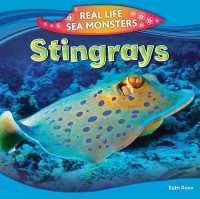Full Description
The Routledge Handbook of Wildlife Crime provides a comprehensive and state of the art overview of wildlife crime in its various forms.
The effects of wildlife crime and over-exploitation are contributing to the possible extinction of one million species. These activities also harm human and non-human animals, ecosystems and communities. To understand and tackle these issues, this handbook presents critical approaches to the study of wildlife crime grounded in empirical, methodological, and conceptual perspectives. Curated for an international audience of researchers, practitioners and policy-makers its contributors are drawn from diverse disciplines, backgrounds, and geographies. The handbook addresses recognised challenges associated with wildlife crime, including transnational security, the role of corporations, legislative frameworks and enforcement strategies, as well as broader concerns related to conservation, sustainable development, socio-environmental harm, and well-being. Importantly, it also delves into emerging areas, such as gender dynamics, digital markets and social media, social inequality and the marginalisation of vulnerable groups, and moral philosophy and ethics. This handbook equips readers to understand and respond to the multifaceted challenges of wildlife crime in the 21st century.
The Routledge Handbook of Wildlife Crime will be of great interest to students and scholars of wildlife crime, wildlife management and conservation, environmental crime, and green criminology more widely. The book will also be of use to practitioners and policymakers involved in developing and implementing strategies to reduce wildlife crime.
Contents
1. Introduction Part I. Wildlife Crime's Interfaces and Interconnections 2. Interfaces of Il/Legality in European Wildlife Trade 3. Wildlife crimes, harms and the role of masculinity in legal and illegal hunting 4. Understanding cultural use and spirituality: lion body-part trade in southern Africa 5. Corporations and Wildlife Crime: Causes, Contexts and Consequences 6. Camel races - tradition, sport and politics 7. Organised crime and wildlife trafficking Part II. Critical Approaches, Methods, and Reflections on Researching Wildlife Crime 8. Zooming-in, zooming-out: Closing the gap between practices in the wildlife trade and associated theories 9. A framework for conducting research on consumer demand for high-value wildlife products in Asia 10. Estimating wildlife crime prevalence: quantitative methods & ethical considerations 11. The Commercial Poaching-Green Militarisation Nexus as Unsustainable Environmental Conflict Part III. Emerging and Alternative Responses to Wildlife Crime 12. Ecocide as Wildlife Crime 13. Wildlife Harmscapes and Whole-of-Society Responses: Beyond Criminalisation Toward Inclusive Conservation 14. Responding to Illegal Wildlife Trade in Hong Kong, SAR, China 15. Southern perspectives on Wildlife Crime; Non-punitive responses to IUU in Argentina 16. Regulatory compliance and the illegal wildlife trade: A case study on the factors affecting rhino horn prescription by Traditional Chinese Medicine practitioners in Guangdong province, China 17. Beyond CITES: the rationale for a global agreement against wildlife trafficking 18. Poaching, Illegal Wildlife Trade and Sustainable Development: Challenges and Opportunity Part IV. Emerging and Ongoing Issues in Wildlife Crime 19. Illegal captive breeding of wildlife 20. Shark fin trade in Hong Kong: forensic and investigative solutions 21. Legalisation and sustainable use as an alternative approach to tackling wildlife crime 22. 'Denial of Injury' and 'Denial of the Victim' in the (Illegal) Wildlife Trade: the case of the European eel 23. Wildlife Trafficking via Social Media: Implications for Biodiversity Conservation and Public Health in Brazil 24. Illegal wildlife trade in non-timber ornamental plants 25. Conclusion. Reflections on researching and understanding wildlife crime







